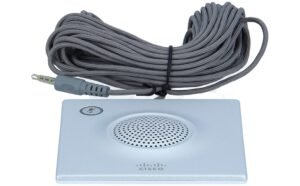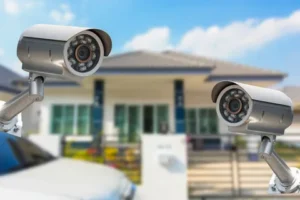In today’s fast-paced world, the need for effective home security has never been greater. Whether you’re safeguarding your property from intruders or simply keeping an eye on loved ones, a home camera system is an essential tool. These systems offer cutting-edge technology, unmatched convenience, and robust protection for modern homes.
This blog dives deep into the benefits of home camera systems, the features you should look for, and how to choose the best option for your needs.
Benefits of Installing a Home Camera System
Investing in a home camera system brings a multitude of advantages, from enhanced safety to peace of mind. Here’s why every homeowner should consider it:
1. Increased Home Security
A camera system acts as a first line of defense against theft, vandalism, and other security threats. Potential intruders are often deterred by the sight of a camera.
2. Remote Surveillance
Modern systems allow you to monitor your property from anywhere in the world using a smartphone or computer. This feature is invaluable for frequent travelers or those with second homes.
3. Emergency Alerts
Advanced systems notify you instantly when motion is detected, enabling you to respond quickly to potential threats.
4. Protecting Loved Ones
Whether it’s keeping an eye on children, monitoring elderly relatives, or ensuring your pets are safe, a home camera system offers unmatched peace of mind.
5. Evidence in Disputes
High-definition footage from your cameras can be vital for resolving disputes or insurance claims.
Features to Look for in a Home Camera System
When choosing a home camera system, certain features are non-negotiable. Here’s what you need to prioritize:
1. High-Quality Video Resolution
Clear video quality is essential for identifying faces, license plates, or other crucial details. Opt for systems with at least 1080p HD resolution for sharp and detailed footage.
2. Motion Detection
This feature triggers recording only when movement is detected, conserving storage and ensuring you only capture relevant events.
3. Night Vision
Infrared or color night vision allows cameras to capture clear footage in complete darkness, making them effective 24/7.
4. Wireless Connectivity
Wi-Fi-enabled cameras are easy to install and provide flexible placement options. They also support remote access and live streaming.
5. Weatherproof Design
Outdoor cameras should be durable and weather-resistant, capable of withstanding harsh conditions.
6. Two-Way Audio
This feature allows you to communicate with visitors or ward off intruders directly through the camera.
7. Cloud Storage and Local Backup
Cloud storage provides secure, remote access to your footage, while local storage (e.g., SD cards) serves as a reliable backup.
Types of Home Camera Systems
Different homes have different security needs. Here’s a breakdown of the most popular types of home camera systems:
1. Indoor Cameras
These are ideal for monitoring the inside of your home. They are often used to watch over kids, elderly family members, or pets.
2. Outdoor Cameras
Outdoor models are built to withstand weather conditions and are typically installed at entry points, driveways, or backyards.
3. Smart Doorbell Cameras
These are perfect for monitoring your front door. They let you see and talk to visitors via your smartphone, even when you’re not home.
4. Wireless Cameras
Wireless systems are easy to install and reposition, making them an excellent choice for renters or those who want hassle-free setup.
5. Wired Cameras
Wired systems provide consistent connectivity and are better suited for permanent installations.
6. PTZ Cameras
Pan-Tilt-Zoom cameras allow users to remotely adjust the camera’s angle and zoom, covering a wider area.
How to Choose the Best Home Camera System
With so many options on the market, selecting the right home camera system can feel overwhelming. Here are some tips to guide your decision:
1. Assess Your Needs
Determine the areas you want to monitor. Do you need cameras for indoor use, outdoor use, or both? Also, consider whether you need a single camera or a full system.
2. Set a Budget
Establish a price range that works for you. High-end systems offer advanced features, but there are also affordable options with excellent performance.
3. Prioritize User-Friendly Features
Look for systems with easy installation, intuitive controls, and seamless integration with other smart devices.
4. Research Brands and Reviews
Stick to reputable brands and read customer reviews to ensure reliability and quality.
5. Choose a Scalable System
If you plan to expand your security coverage in the future, opt for a system that allows for additional cameras and accessories.
Top Brands Offering Home Camera Systems
If you’re considering a home camera system, these brands are leading the market with their innovative products:
- Ring: Known for its video doorbells and seamless smart home integration.
- Arlo: Offers high-quality wireless systems with advanced features like AI detection.
- Nest: Provides intelligent cameras that integrate smoothly with Google Home.
- Wyze: Budget-friendly options with surprising versatility.
- Eufy: Focused on privacy and local storage while delivering excellent performance.
Installing a Home Camera System: DIY or Professional Help?
Deciding between a DIY installation and professional setup depends on your technical skills and the complexity of the system.
DIY Installation
- Wireless cameras are straightforward to set up and require minimal tools.
- Suitable for renters or those who want flexibility.
Professional Installation
- Recommended for wired systems or large-scale setups.
- Ensures optimal placement and configuration for maximum security.
Maintaining Your Home Camera System
A well-maintained home camera system ensures consistent performance and durability. Here are some tips:
- Clean Regularly: Dust and debris can affect camera lenses. Clean them periodically with a soft cloth.
- Update Firmware: Ensure your system is running the latest software to prevent vulnerabilities.
- Test Periodically: Check your system’s functionality regularly to avoid unexpected failures.
- Secure Your Network: Use strong passwords and enable encryption to protect against hacking.
Future Trends in Home Camera Systems
The evolution of technology is continuously improving home security. Here’s what’s on the horizon:
1. AI-Powered Cameras
Artificial Intelligence will enable cameras to recognize specific faces, actions, or objects.
2. Voice-Controlled Systems
Integration with voice assistants like Alexa and Google Assistant will become more widespread.
3. Solar-Powered Cameras
Eco-friendly options will gain popularity, eliminating the need for batteries or wiring.
4. Advanced Data Analytics
Cameras will provide insights into activity patterns, helping homeowners optimize security.
Conclusion
A home camera system is a powerful tool for enhancing your home’s security and giving you peace of mind. Whether you’re looking for basic monitoring or advanced features like AI integration and smart home compatibility, there’s a system out there to suit your needs.
Take the time to assess your requirements, explore the available options, and invest in a reliable system that will keep your home safe for years to come.













